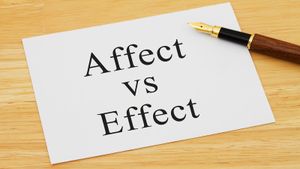What is a Run-on Sentence?
A run-on sentence happens when two independent clauses are not properly joined. An independent clause has a subject and a verb and expresses a full thought that can stand alone as a sentence.
Here is an example of a Run-on sentence:
The children played in the sprinkler the dog joined them.- First independent clause that is a complete thought: The children played in the sprinkler.
- Second independent clause that is a complete thought: The dog joined them.
There are three types of run-on sentences, and various ways to fix them to improve the clarity of a sentence.
Run-on Sentences vs. Sentence Fragments
Both run-on sentences and sentence fragments fail to properly express a complete thought and thus are incorrect. Where a run-on sentence lacks proper punctuation, a sentence fragment is missing either a subject or a verb or does not express a complete thought.
Examples of Sentence Fragments:
- Sentence fragment missing a subject: Playing in the street.
- Sentence fragment missing a verb: The children in the front yard.
- Sentence fragment not expressing a complete thought: While the children played in the sprinkler.
What happened while the children played in the sprinkler is not conveyed in this example, which only has a subject and a verb.
Different Types of Run-on Sentences
There are three types of run-on sentences: a fused sentence, a comma splice, and a polysyndeton.
- Fused sentence: A fused sentence happens when two independent clauses are joined together without proper punctuation to create a run-on sentence.
- Comma splice: A comma splice happens when two independent clauses that could stand alone are joined by a comma instead of a coordinating conjunction.
- Polysyndeton: This kind of run-on sentence uses several conjunctions throughout the sentence, without the correct punctuation.
Run-on Sentence Examples
Here are examples of each of the types of run-on sentences.
- Fused sentence: The children played in the sprinkler the dog joined them.
- Comma splice: The children played in the sprinkler, the dog joined them.
- Polysyndeton: The children played in the sprinkler and the dog joined them but the cat sat on the sidewalk.

How to Fix a Run-on Sentence
There are various ways to fix a run-on sentence properly.
- Separate the independent clauses by putting each one into its own sentence.
The professor lectured. The students took notes.
Class began. The professor lectured. Students took notes.- Using a semi-colon is the most effective way to separate the independent clauses.
Class began; the professor lectured.
The professor lectured; students took notes.
The semicolon is a good solution if you have two independent clauses in your run-on sentence. If you have three independent clauses, inserting two semi-colons is technically correct, but may look awkward to readers.
Class began; the professor lectured; students took notes.There are other, better options for repairing a run-on sentence with three independent clauses.
- You can also fix a run-on using one or more commas and one of the following coordinating conjunctions: and, but, so, or, nor, for.
Class began, and the professor lectured.
The professor lectured, so the students took notes.In these examples, two independent clauses are being joined, and one comma before the conjunction is all that is necessary. However, to join three independent clauses, insert a comma after the first two.
Class began, the professor lectured, and students took notes.This is often a very effective way to repair a run-on with three independent clauses.
- Create a compound sentence from the run sentences.
- Create a complex sentence from the run-on sentence.
- The most sophisticated way to fix a run-on is to subordinate one of the independent clauses. When you subordinate a clause, you change the wording so that it is a dependent rather than an independent clause.
When class began the professor lectured.
The professor lectured while the students took notes.
Adding “when” and “while” to what had formerly been independent clauses made them dependent clauses that could be joined to an independent clause with no punctuation. Sometimes, when you subordinate a clause, you may need a comma.
For fused sentences, you can fix them by separating the independent clauses.
Example:
The sun is out the sky is blue. → The sun is out. The sky is blue.OR
You can fix it by adding proper punctuation and/or coordinating conjunction.
I have a big test tomorrow I can’t go out. Corrections:
I have a big test tomorrow, so I can’t go out.
I have a big test tomorrow; I can’t go out.Another Example:
The children were loud they climbed on the sofa the adults weren’t happy with them.Corrections:
The children were loud, and they climbed on the sofa. The adults weren’t
happy with them.
The children were loud, they climbed on the sofa, and the adults weren’t
happy with them.
The children were loud; they climbed on the sofa; the adults weren’t happy
with them.
The children were loud. They climbed on the sofa. The adults weren’t happy
with them.
How to fix comma splices.
For comma splices, there are actually a few different ways it may look. The most common occurrence is when two independent sentences are joined with only a comma.
Example:
They ran together, they played tennis together.- To fix this, the sentence could be split into two sentences.
They ran together. They played tennis together.- Another way to fix this sentence is to add a coordinating conjunction (e.g. but, and, or, yet, so, for) after the comma.
They ran together, and they played tennis together.- You can also use a semicolon to separate the sentences, although it is not
They ran together; they played tennis together.- The last way to fix a comma splice is to rewrite the sentence completely.
They ran and played tennis together.Any of the solutions above are great ways to improve a run-on. Once you are familiar with them, you can use them together to add even more variety to your writing.
Class began. The professor lectured, and students took notes.Correction:
When class began, the professor lectured. Students took notes.Another correct way:
When class began, the professor lectured; students took notes.






